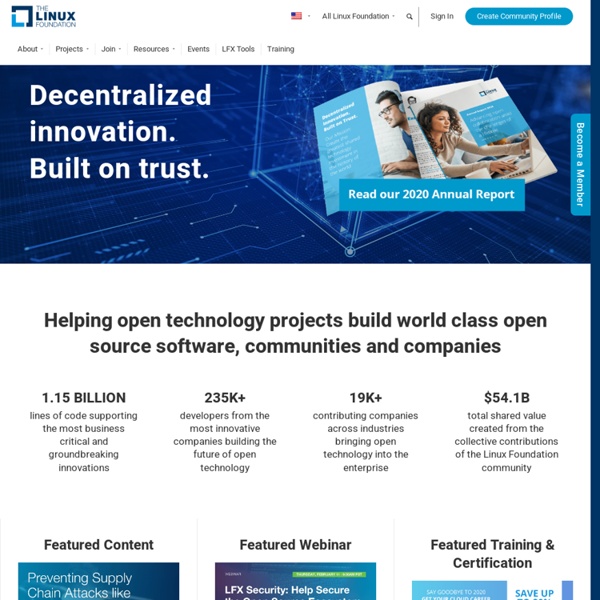



Computer Hope's free computer help Pinehead.tv | Linux | Web Development | Tutorials Tips & News Why Linux is better PDFBEAR is founded by the team behind WhyLinuxIsBetter.net, which brings tons of experience in user conversion tools. We have decided to change our focus to helping and improving how our users convert files on all platforms including Linux. About WhyLinuxIsBetter.net The webpage was created in order to help people understand the ins-and-outs of Linux. In addition to this, it was emphasized that Linux is a free service, but it also protects the end-user from malware. Similar to PDFBEAR, we have created a malware-free service. Below you will find the pages that will help you have a better experience with PDF documents: More on By now you should have an idea of what PDFBEAR is about.
Welcome - Linux Wireless UGP (Ubuntu Gaming Project) Android (operating system) Mobile operating system Android is a mobile operating system based on a modified version of the Linux kernel and other open-source software, designed primarily for touchscreen mobile devices such as smartphones and tablets. Android is developed by a consortium of developers known as the Open Handset Alliance, though its most widely used version is primarily developed by Google. It was unveiled in November 2007, with the first commercial Android device, the HTC Dream, being launched in September 2008. The source code has been used to develop variants of Android on a range of other electronics, such as game consoles, digital cameras, portable media players, and PCs, each with a specialized user interface. History First Android logotype (2007–2014) Second Android logotype (2014–2015) Third Android logotype (2015–2019) Fourth Android logotype (2019–present) HTC Dream or T-Mobile G1, the first commercially released device running Android (2008) Features Interface Home screen Status bar Notifications
Linux notes from DarkDuck ASIMO Development history[edit] P3 model (left) compared to ASIMO Honda began developing humanoid robots in the 1980s, including several prototypes that preceded ASIMO. It was the company's goal to create a walking robot which could not only adapt and interact in human situations, but also improve the quality of life. The E0 was the first bipedal (two-legged) model produced as part of the Honda E series, which was an early experimental line of humanoid robots created between 1986 and 1993. The research conducted on the E- and P-series led to the creation of ASIMO. Differing from its predecessors, ASIMO was the first to incorporate predicted movement control, allowing for increased joint flexibility and a smoother, more human-like walking motion.[10] Introduced in 2000, the first version of ASIMO was designed to function in a human environment, which would enable it to better assist people in real-world situations. Features and technology[edit] Form[edit] Abilities[edit] Mobility[edit]
The Geek Stuff TechEBlog home - h-node.org